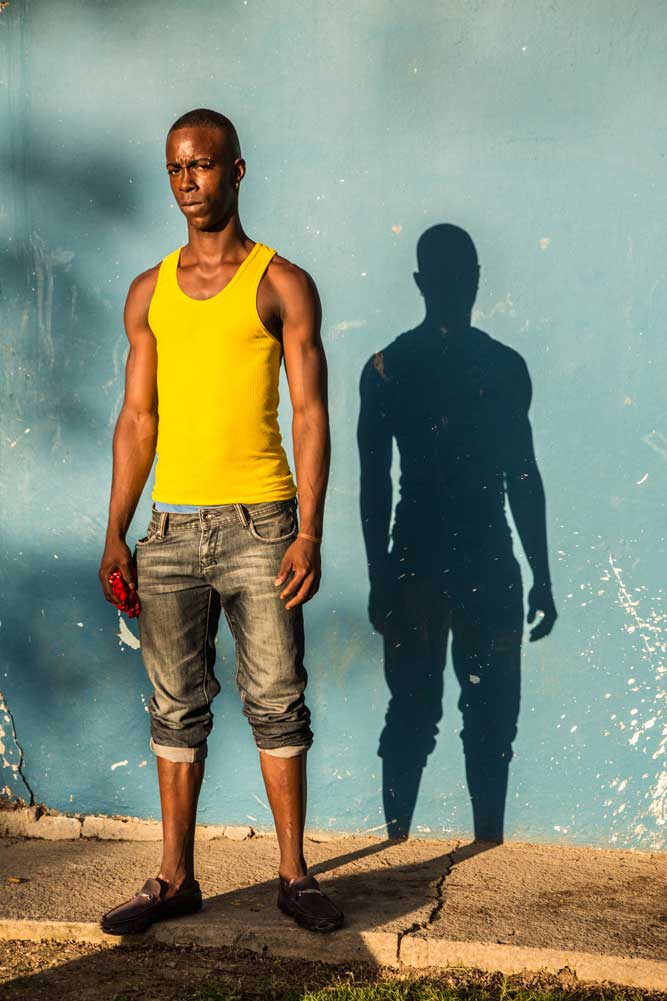Task 30 – Introvert/extrovert
Task 30
Introvert/extrovert

Santiago de Cuba, Cuba, 2014. Photo: Arild Bergseth
Problem
Not knowing if you are an extrovert or introvert
For me, it was often difficult to be at a party. Everyone chattered so much. Sometimes I had to take a walk or lock myself in the bathroom to collect my thoughts. The pressure was too great. Many people probably thought I was boring to talk to since I did not have lively facial expressions and spoke softly. Was I boring? I didn’t think so. I had worked as a teacher and in retail, fields where talkative people thrive. But I was always a little different. I was observant and I listened, and keen on understanding.
Perhaps more than any other, the camera is the instrument of the introvert. A little hidden behind the camera, we observe the world. Extroverts often prosper better in front of the camera. Introverts are especially good at receiving signals and extroverts are good at sending them out.
Are you an extrovert or introvert – or something in between? It is a sliding scale. In addi- tion, we can be ambiverts; extroverted in one context and introverted in another. On one day we can make an enthusiastic contribution in a discussion in the photo club while the next day we sit at the back of the room during a parents’ meeting at school without daring to raise our hand. The introvert prefers calm and tranquility, has a good deal of self-insight, takes plenty of time to think, can work concentratedly over a long period of time, is thorough and good to motivate himself, has calm facial expressions and body language, gets tired from a lot of talking and of meeting people and is often perceived as being a little boring and distant by extroverts.
The extroverts get energy from communicating with other people, are easily excited, are often quick and impatient, have lively body language and facial expressions, would rather go to a party than read a book, often talk without having thought things through first, don’t have the greatest self-insight, is startled and shouts if something exciting happens, and are often perceived as a little tiresome by the introverts.
It is important to know if you are an extrovert or introvert. The way you understand oth- ers, and are understood yourself, depends to a great degree on these personality traits. The better you know yourself, the more misunderstandings can be avoided. It is not so that one is better than the other. We need a good mix, not least when we work in pairs or in groups. Variety creates an effective dynamic. Friction is productive and resistance provides growth.
How relevant is the issue for you on a scale of 1 to 6:
Solution
Balance personality
I hadn’t held that many photo workshops before I understood how differently introverts and extroverts photographed. The introverts used a little longer time and approached people more slowly, often too slowly. The extroverts used a short amount of time, approached peo- ple quickly, often too quickly. Thus it became clear that introvert photographers had to learn a little extroverted behavior and vice versa.
We introverts need to learn to use body language more actively, talk a little more, not think as much before we do something, act more secure when we have contact with other people and find techniques to keep conversations going. We need to dare to be seen. Try to get people to talk about themselves and then they will feel important and get a rush of sero- tonin. Had I only known this during the time I was young and locked myself in the bathroom then I could have contributed more to the parties!
The extroverts, with their tendency to rush too quickly in meeting people, need to learn to slow down a bit, practice receiving more signals than they send out, think a little more before doing something, let the person they photograph have a little more space, be patient and stay in a situation longer than they actually intended – that is when the good photos appear.
Often it is actually the introverts who over time become the best photographers of people since they use more time and encounter more obstacles that they have to cope with along the way. Contact with people often comes easily to the extroverts. However, in this area, like in so many other ones, the talented ones may quickly relax and be passed by the ones who work hard.
The extroverts can practice receiving input from people, nature or objects. Stay in the situation even if you feel the urge to move on.
The introverts can practice at sending out signals, taking control of a conversation and being quicker and more secure when in touch with other people.
PHOTO ASSIGNMENT:
Photograph someone you know who is extroverted or introverted, preferably the opposite of what you are. How does this leave its mark on the communication and experience you have together?
How useful was this task for you on a scale of 1 to 6:
BOOK SUGGESTION: Quiet: The Power of Introverts in a World That Can’t Stop Talking by Susan Cain. See also ted.com.
❞ Introverts are capable of acting like extroverts for the sake of work they consider important, people they love, or anything they value highly.
Susan Cain
❞ When I’m performing I’m an extrovert, yet inside I’m a completely different man.
Freddie Mercury
[note_editor]

